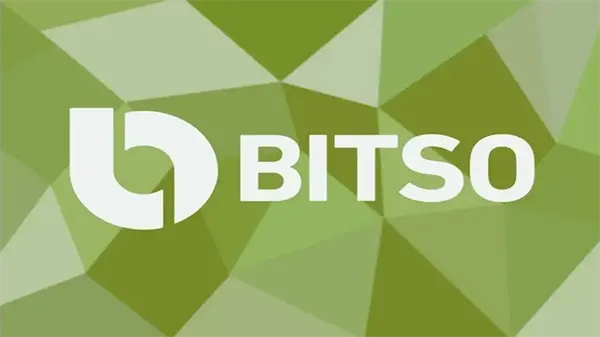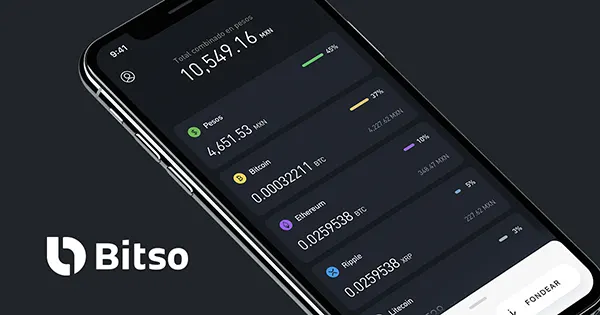
Bitso: The First Major Latin American Exchange — Opportunities, Fees, and Regulations
Founded in Mexico in 2014, Bitso has become a cornerstone of cryptocurrency trading in Latin America. As of 2025, it serves more than six million users across Mexico, Brazil, Argentina, and Colombia, offering access to both cryptocurrencies and stablecoins with seamless integration of local payment systems. The exchange’s growth has been driven by remittance demand, institutional adoption, and transparent regulatory compliance. This article explores Bitso’s opportunities, fee structure, and regulatory framework to understand how it shapes the Latin American crypto economy today.
Opportunities and Market Positioning
Latin America has emerged as one of the most dynamic crypto regions worldwide. According to multiple industry reports, transaction volume on centralised exchanges in the region has increased nearly ninefold since 2021. Bitso dominates this market, handling approximately 90% of all exchange-based flows by 2025. Such dominance reflects its strong understanding of regional banking systems, cross-border payment needs, and regulatory environments.
The company’s competitive advantage lies in its integration with local fiat systems. Bitso supports deposits and withdrawals in Mexican pesos (MXN), Brazilian reals (BRL), Argentine pesos (ARS), and Colombian pesos (COP). This makes it far easier for users to convert between fiat and digital assets compared to using global exchanges that lack local banking access. For many users, Bitso represents a practical gateway to both investing in and transacting with cryptocurrencies.
Additionally, Bitso is expanding beyond the retail sector into institutional finance. The exchange now facilitates stablecoin settlements for companies and financial institutions, enabling faster and cheaper international transfers. In 2025, Bitso also introduced its own Mexican peso-backed stablecoin through its subsidiary Juno, offering businesses improved efficiency in remittance and treasury operations.
Strategic Advantages and Growth Drivers
One of Bitso’s core strengths is its regulatory legitimacy and focus on compliance. It holds a Distributed Ledger Technology (DLT) licence from the Gibraltar Financial Services Commission, confirming adherence to international financial standards. This ensures a higher level of trust among institutional clients and regional regulators, especially as Latin American crypto laws mature.
Another major driver of growth is its ability to serve the unbanked population. With limited access to traditional financial services in some parts of Latin America, Bitso enables millions to store, send, and invest money digitally. Its intuitive interface and low minimum deposit requirements have encouraged adoption among users who had never previously engaged with financial products.
Furthermore, Bitso’s role in cross-border payments has become crucial. In countries like Mexico, where remittances from abroad are a significant part of the economy, Bitso offers lower fees and faster settlements than traditional money transfer services. This has positioned it not just as a trading venue but as a fintech infrastructure provider supporting real-world financial inclusion.
Fee Structure and Services
Bitso operates on a transparent fee model that varies depending on trading volume and country. For local bank deposits and withdrawals, fees are typically minimal — often zero when using systems such as SPEI in Mexico or PIX in Brazil. However, international transfers and currency conversions may incur modest costs based on network or banking fees.
Trading fees follow a maker-taker model. On the Bitso Alpha platform, makers generally pay lower fees than takers to encourage liquidity. For high-volume traders, discounts apply progressively based on monthly turnover. While Bitso’s fees are slightly higher than those of some global exchanges, the convenience of local integration offsets this difference for regional users.
Bitso also offers additional services such as Bitso Business, a B2B solution for companies seeking cryptocurrency payment processing, and Bitso Shift, which supports real-time remittances. These services are priced individually depending on transaction volume and jurisdiction. Importantly, users can also hold stablecoins like USDC, USDT, and MXN-backed tokens to mitigate volatility and improve transaction efficiency.
User Experience and Practical Considerations
Bitso’s platform is designed with simplicity in mind, supporting both new and experienced traders. The mobile app enables buying, selling, and transferring cryptocurrencies with minimal delay, while the web platform provides advanced charting and trading tools. Bitso Earn, introduced in earlier years, allowed users to generate passive income on selected assets, though regulatory shifts in 2025 have limited yield-based services to licensed jurisdictions.
For users prioritising safety, Bitso maintains multi-signature cold storage, insurance coverage for digital assets, and compliance with anti-money laundering (AML) standards. Users can activate two-factor authentication (2FA) and biometric login for extra security. Transparency has become one of the exchange’s hallmarks, with periodic audits and public reserve disclosures.
In 2025, Bitso expanded its ecosystem further through educational initiatives, publishing detailed research on cryptocurrency adoption in Latin America. These resources help new users understand blockchain technology and risk management, strengthening Bitso’s reputation as a trusted player rather than a speculative trading venue.

Regulations and Market Challenges
Bitso operates within an evolving regulatory framework across Latin America. Mexico has implemented fintech and virtual asset laws under the Comisión Nacional Bancaria y de Valores (CNBV), while Brazil and Colombia have each introduced national crypto regulations aligning with global Financial Action Task Force (FATF) standards. Bitso’s early compliance efforts have allowed it to remain active and licensed across these jurisdictions.
Nevertheless, regulatory diversity still poses challenges. Some countries continue to restrict or delay crypto regulation, resulting in operational complexity. Bitso mitigates this risk through a decentralised operational model — using local entities and partnerships to comply with each market’s specific requirements. This adaptability has been essential to maintaining its dominance amid changing political and legal environments.
Looking forward, Bitso aims to strengthen its transparency and governance practices while expanding into new markets such as Peru and Chile. With its strong regulatory foundation and growing institutional client base, it is positioned to play a leading role in shaping how Latin America integrates digital assets into mainstream finance.
Future Outlook and Strategic Vision
Bitso’s strategy for 2025 and beyond focuses on infrastructure, transparency, and innovation. By combining regulatory compliance with real-world payment applications, the company continues to bridge traditional finance and blockchain technology. Stablecoins are expected to remain central to its business model, particularly in remittance corridors where cost and speed advantages are most significant.
The exchange’s growing partnerships with banks and fintechs suggest a long-term trend toward hybrid financial ecosystems. In this sense, Bitso is no longer merely a trading exchange — it has evolved into a digital finance provider capable of connecting individuals, companies, and global markets through compliant blockchain infrastructure.
Overall, Bitso’s balance of innovation, regulatory discipline, and focus on regional financial inclusion solidifies its position as the leading Latin American crypto exchange. Its continued success will depend on maintaining this balance as competition intensifies and global regulation becomes more standardised.
